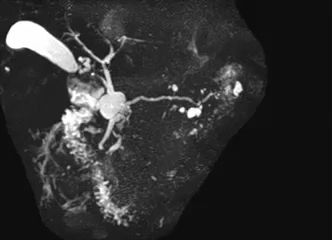
| MRI of the Liver | $1,075 |
|---|---|
| MRI of the Liver and MRCP | $1,475 |
While some MRI exams of the Liver do not require contrast, there are many indications where contrast would be beneficial. In these cases, an additional $350 will be charged.
MRI is one of the most sensitive and specific methods of looking at the liver. MRI of the liver will allow visualization of many conditions, including cancer, hemangiomas, focal nodular hyperplasia, infiltration of fat into the liver, iron deposition in the liver or other disease processes.
To fully assess these conditions, we may need to add a specialized type of image that is acquired after the intravenous injection of an MRI contrast agent (dye). We may require you to have a blood test before this procedure. The type of contrast agent we use has been validated to be one of the safest types available. This dye is specific for liver imaging, and allows us to assess the liver in ways that a generic type of dye would be less able to. The entire MRI exam will take approximately 45 minutes to 1 hour, but this may vary depending on the specific information your doctor requires.
Our radiologist will include a quantification of fat content and R2* (a measure of iron content) of your liver for all MRI exams of the liver. This is not routinely measured on liver MRI exams done at most other institutions.
In some cases your doctor may ask us to acquire additional imaging known as an MRCP. Magnetic Resonance Cholecystopancreatography (MRCP) is a specialized examination of the bile ducts of the liver, gallbladder and pancreas. The fluid in these ducts appear bright on the MRCP exam and can be processed into 3D rotation views.
In order for the fluid in the bowel to not interfer with the ability to see these ducts, patients are instructed to not eat or drink anything for 4 hours prior to their appointment. This exam will add approximately 30 minutes to your visit.

MRCP demonstrating multiple cysts associated with the pancreatic duct.


